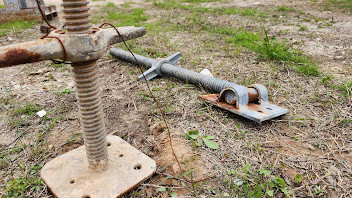Proper Use of Screw on Jack legs
As a construction worker or contractor, safety should always be your number one priority when you are working on a construction site. Building scaffolding is a crucial aspect of the construction process, and with that comes the proper use of jack legs. Jack legs are vital components that provide stability and support to scaffolding systems. In this blog, we will discuss the proper use of jack legs when building construction scaffolding.
First and foremost, it is important to understand what jack legs are and their purpose. Jack legs are adjustable metal rods that are used to level and stabilize scaffolding. They are attached to the base of the scaffolding system and can be extended or retracted to adjust the height of the scaffolding. When using jack legs, it is essential to ensure that they are properly placed and adjusted to avoid any mishaps.
Before attaching the jack legs, make sure you have a level surface for the scaffolding to stand on. It is recommended to place a base plate or sole plate under each jack leg to provide a sturdy foundation. When adjusting the height of the jack legs, it is important to do so gradually. You should only extend or retract the jack leg a few inches at a time to avoid sudden shifts in weight distribution. If you need to make a significant adjustment, it is best to do so with the help of another worker to ensure stability.
Another critical factor to consider when using jack legs is their weight capacity. The weight capacity will vary depending on the size and type of scaffolding system you are working on. Always double-check the manufacturer's instructions to ensure proper weight distribution and load capacity. Lastly, when you have finished using the scaffolding system, make sure to properly retract the jack legs. Leaving them extended can cause unnecessary strain on the scaffolding and may lead to instability.
The proper use of jack legs when building construction scaffolding is crucial to the stability and safety of the site. Always make sure to follow proper procedures, including the use of base plates, gradual adjustments, weight capacity, and retraction. Remember, safety should always be your top priority on a construction site.
Recent Posts
-
Scaffolding Rental vs. Turnkey Scaffolding Services: What Contractors Should Know Before Deciding
When you’re planning a project that requires scaffolding, one of the first decisions you’ll face is …Dec 19th 2025 -
Why Hiring a Professional Scaffolding Company Matters
Scaffolding is one of those things that people often underestimate—until something goes wrong. On pa …Dec 17th 2025 -
Scaffolding Impact on Project Scheduling & Deadlines
When people think about project delays, they usually blame weather, material shortages, or labor iss …Dec 15th 2025




